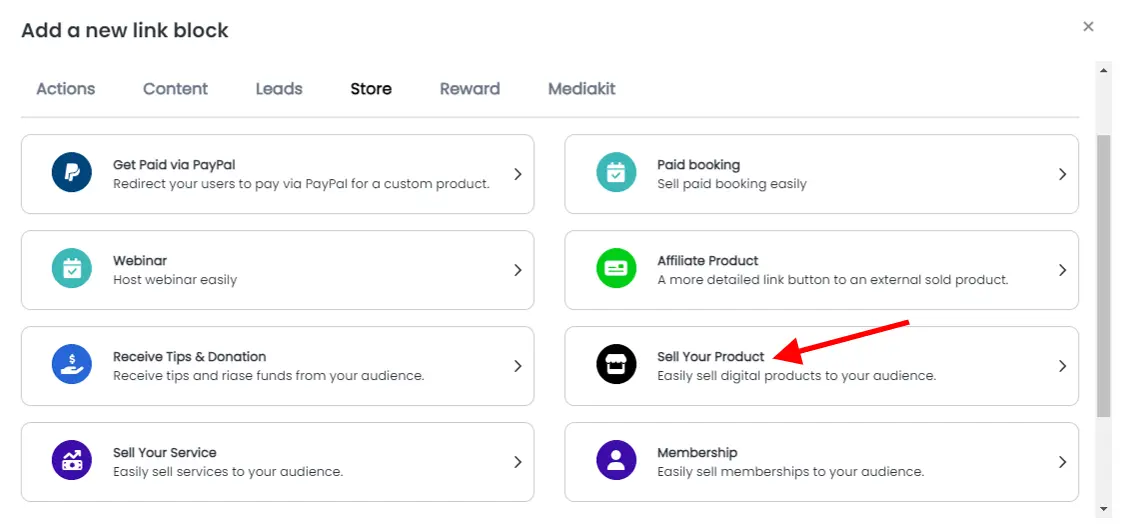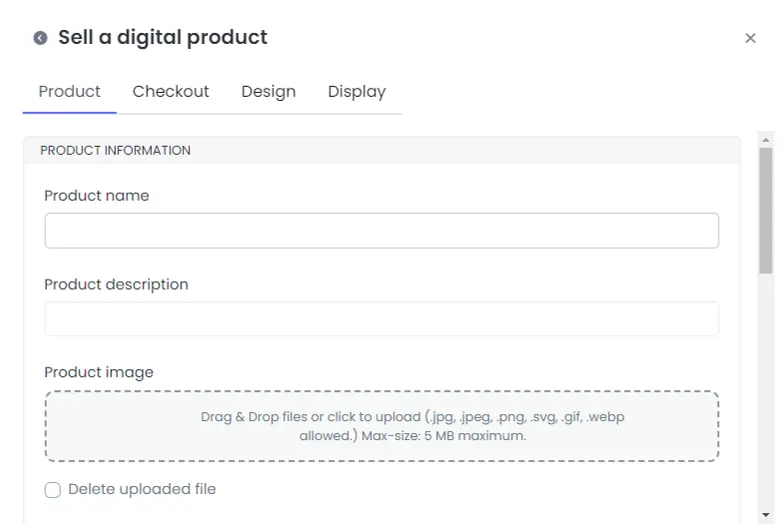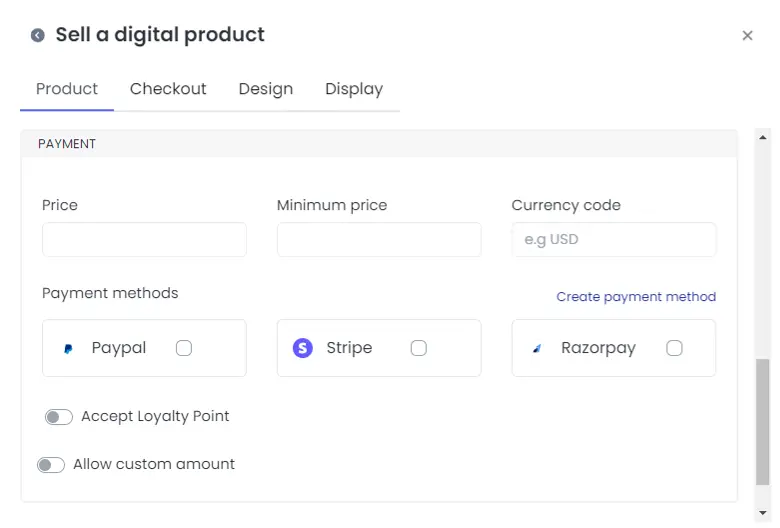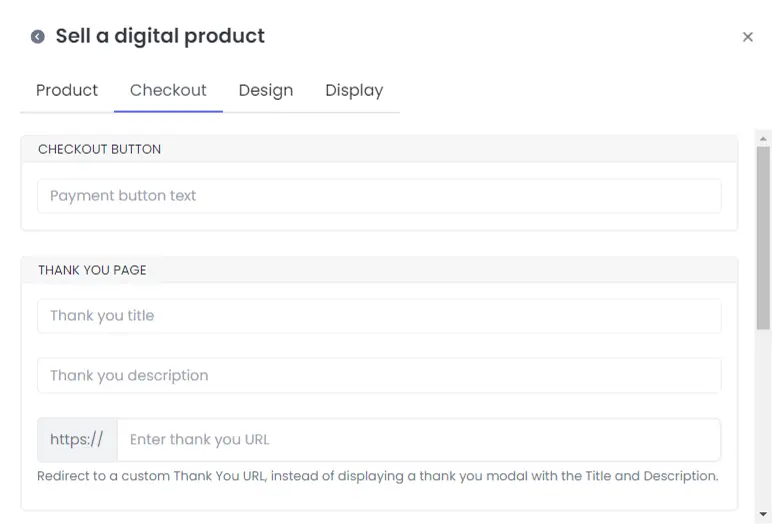Digital products are increasingly becoming the go-to way for creators to generate income and share their expertise. From e-books to online courses, these products allow creators to package their knowledge, skills, or art into something that can be sold repeatedly without the need for physical inventory. This has seen more and more creators look towards this avenue as a means to earn.
Digital products play a crucial role in the creator economy because they provide an opportunity to scale income beyond traditional boundaries. Unlike one-on-one services, digital products can reach a global audience and generate revenue around the clock. In this article, we’ll talk on how to monetize digital products as a creator, sharing tips and useful insights.
How to monetize digital products as a creator
Monetizing your digital products goes beyond putting your product up for sale. It involves careful planning, picking of sales platforms as well as determining the best monetization strategy to employ.
Below are some of the most popular means of monetizing your digital products:
1. Sales funnel: Turning interest into sales
A sales funnel is a system that guides potential customers through different stages, from awareness to purchase. This approach allows creators to attract new audiences, build trust, and convert them into paying customers. Each stage of the funnel plays a key role in monetizing digital products effectively.
Strategies:
- Use free products (e.g., e-books) to attract leads and build an email list.
- Send email sequences with helpful content to nurture trust.
- Include clear calls-to-action (CTAs) in emails to encourage purchases.
- Create upsells and cross-sells within the funnel for more revenue.
2. Affiliate marketing: A boost for your digital product sales
Affiliate marketing allows you to collaborate with others who promote your digital products in exchange for a commission. This strategy expands your reach and generates additional income while you focus on product creation and growth. It’s especially effective if your affiliates have an engaged audience interested in your product.
Strategies:
- Partner with influencers or creators whose audience aligns with your product.
- Provide affiliates with promotional materials like banners or discount codes.
- Track performance using unique affiliate links to optimize campaigns.
- Incentivize affiliates with tiered commission rates or exclusive bonuses.
3. Subscription model: Building consistent income
The subscription model allows creators to offer digital products or services for recurring payments, ensuring a steady income. This could include exclusive content, templates, or monthly access to new materials. It’s perfect for creators with ongoing value to provide.
Strategies:
- Offer tiered pricing, with higher tiers providing more benefits.
- Provide early access to exclusive content or resources.
- Create a members-only community for networking or support.
- Send regular updates to keep subscribers engaged and renewing.
4. Product bundling: Adding value through packages
Bundling combines multiple products into a single offer, often at a discounted price. This increases perceived value and encourages buyers to spend more. It’s ideal for creators who have a variety of products that complement each other.
Strategies:
- Group related products like templates, courses, or guides into bundles.
- Offer “buy one, get one free” promotions for digital products.
- Create seasonal bundles for specific times of the year.
- Promote bundles as limited-time offers to create urgency.
5. Premium pricing: Selling at a higher value
Premium pricing involves charging higher prices for digital products that offer exclusive value, in-depth knowledge, or high-quality resources. This strategy works best for creators with authority or expertise in a specific area.
Strategies:
- Position the product as solving a unique problem or saving time.
- Highlight features like exclusivity, bonuses, or expert insights.
- Use testimonials or reviews to justify higher pricing.
- Limit access or availability to create exclusivity.
How to price your digital products
Pricing your digital products requires a balance between making them attractive to customers and ensuring they reflect their value. Here’s a step-by-step guide to help you decide on the best price:
1. Research your market
Understand what similar products cost in your niche. Look at competitors and consider their pricing models, product quality, and audience size. This helps you identify a competitive range for your product while ensuring you don’t underprice or overpriced.
2. Factor in product value
Think about the problem your product solves and the value it provides to customers. Products that save time, improve skills, or offer unique insights can be priced higher because they deliver significant benefits. Always align your pricing with the perceived value of your product.
3. Consider your audience
Know your target audience’s willingness to pay. If they are professionals looking for advanced solutions, a higher price may be justified. For a general audience, a more affordable range might work better. Matching the price to your audience’s expectations is essential.
4. Account for production costs
Even digital products have costs, such as software tools, design, or marketing expenses. Calculate these costs and ensure your pricing allows you to cover them while making a profit. Don’t forget to factor in taxes or platform fees as well.
5. Test different pricing tiers
Experiment with various pricing models to see what works best. You can offer multiple tiers, such as basic, standard, and premium versions, to appeal to a broader audience. Each tier can provide more features or resources at increasing price points.
6. Include discounts and promotions
Use limited-time offers or launch discounts to encourage early sales. Discounts can help attract customers while providing insights into the most effective price range for your product. Avoid overusing discounts to maintain the perceived value.
7. Opt for psychological pricing
Use pricing strategies like ending prices with “.99” to make them appear lower, or anchor higher-priced products next to lower ones to highlight value. These techniques can subtly influence customer decisions and increase sales.
How to sell digital products using Pushbio
Choosing the right platform is essential for effectively selling your digital products. The ideal platform depends on your product type, audience, and business goals.
Pushbio lets you create your own storefront to sell digital products. It offers customization, reliable payment processing, and marketing tools. With Pushbio, you control branding and have access to analytical data for added functionality. It’s a great option for creators with multiple products who want full control over their storefront.
Follow these steps to add and configure your digital product for sale on your Pushbio link in bio page:
Creating your Pushbio account and your link in bio page
- Log in to your Pushbio account. If you don’t have one, click here to open a Pushbio account.
- Log in to your Pushbio account to access the dashboard.
- Select the ‘Link in bio page’ tab from the left menu.
- Click ‘Add biolink’ to create one from scratch or ‘Use template’ to select a premade option.
- If creating from scratch, enter a custom biolink name or leave it blank for a randomly generated one.
- Click ‘create biolink page’ to generate your landing page.
- Customize your biolink page to match your brand.
After creating your link in bio page, you can fully set it up by following the steps here.
Adding your Product block
- Log in to your Pushbio account.
- Click the ‘Link in Bio Page‘ tab on the left sidebar.
- From the list of displayed bio pages, select the page where you want to sell digital products.
- Scroll down and click ‘Add Block’.

- Go to the ‘Store’ tab and choose ‘Sell Your Product’ from the options.

- Enter your product details: name, description, and upload a thumbnail image.

- Choose to either upload the digital file or link to an external product page.
- Set your price, minimum price, and currency.

- Select your preferred payment method by checking the appropriate box.
- Enable ‘Accept Loyalty Points’ if you want fans to use points for purchases, and specify the number of points required.
- Turn on ‘Allow Custom Amount’ if you want fans to decide how much to pay.
Configure the Checkout Tab
- Add text for the checkout button.

- Customize the thank-you page with a title and appreciation message.
- Optionally, redirect buyers to a thank-you URL.
- Add your email to receive notifications or use the webhook URL option for automated alerts.
- Once complete, click ‘Add Block’ to save the product setup.
Your product is now ready for sale directly from your Pushbio page. Refer to the full guide here.
Tips to help you effectively sell more digital products
1. Leverage content marketing
Content marketing involves creating helpful blog posts, videos, or guides that attract your target audience. This strategy positions you as an expert in your field while subtly promoting your digital products. Focus on solving problems your audience faces and providing free value to gain trust and encourage them to explore your paid offerings.
2. Use email marketing
Email marketing is a direct way to engage with potential customers. By building an email list, you can send updates, exclusive offers, and helpful tips to keep your audience interested. Use automated email sequences to guide subscribers toward purchasing your products, starting with valuable content and ending with a clear call-to-action.
3. Collaborations and Influencer partnerships
Working with other creators or influencers helps you reach a wider audience. Partner with those whose audience aligns with your target market. This could involve co-creating content, promoting each other’s products, or offering joint discounts. Such partnerships add credibility to your brand and expose your digital products to new potential buyers.
4. Automating sales and deliveries
Automation tools make selling digital products easier by handling sales, payments, and deliveries. Platforms like Gumroad or Shopify ensure customers receive their purchases instantly, saving you time. Use autoresponders for customer inquiries and set up workflows for upselling or delivering bonuses. Automation ensures a seamless buying experience for your customers.
5. Consider upselling and cross-selling techniques
Upselling encourages buyers to purchase a premium version of your product, while cross-selling suggests complementary products. This approach increases the average order value. For example, offer a bundle discount or suggest additional tools customers can use with your product during checkout. These techniques make the most of every sale.
6. Use social proof and testimonials
Social proof, such as reviews, testimonials, or user-generated content, helps potential customers feel confident about their purchase. Display positive feedback prominently on your website or sales page. Share stories of how your products have helped others to demonstrate their value and encourage new customers to trust your offerings.
7. Retargeting campaigns
Retargeting campaigns allow you to reach people who visited your website but didn’t make a purchase. Use ads on platforms like Facebook or Google to remind them about your products. Offer incentives like limited-time discounts or free trials to encourage them to complete their purchase. Retargeting increases your chances of converting hesitant buyers.
8. Leverage data analytics
Data analytics tools like Google Analytics or platform insights help you track customer behavior and sales trends. Use this information to understand what products perform well, where your traffic comes from, and which marketing efforts are effective. By analyzing data, you can make informed decisions to refine your strategies and boost sales.
Can I generate passive income from digital products?
Yes, you can generate passive income by selling digital products, and it’s one of the best ways for creators to achieve financial freedom. Digital products are intangible items that can be sold repeatedly without ongoing production costs. Once created, a digital product can be sold indefinitely with minimal effort. The key is to invest time and effort upfront to create high-quality products that address your audience’s needs.
Wrapping Up
Monetizing digital products is a powerful way to turn your creativity into a sustainable income stream. Whether it’s through sales funnels, affiliate marketing, subscriptions, or bundling, the opportunities are vast. Using a platform like Pushbio simplifies the process, while strategies like content marketing, email campaigns, and social proof help boost sales.








